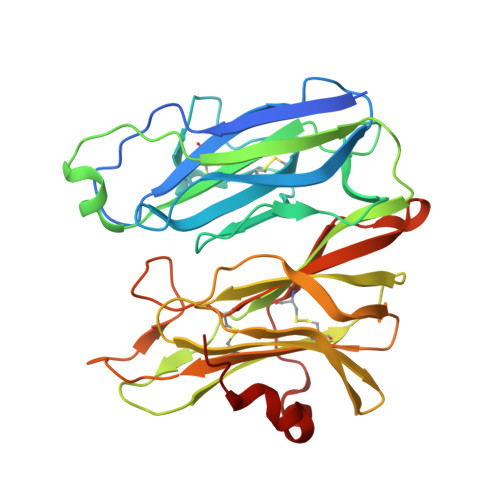Effects of copper occupancy on the conformational landscape of peptidylglycine alpha-hydroxylating monooxygenase.
Maheshwari, S., Shimokawa, C., Rudzka, K., Kline, C.D., Eipper, B.A., Mains, R.E., Gabelli, S.B., Blackburn, N., Amzel, L.M.(2018) Commun Biol 1: 74-74
- PubMed: 30271955
- DOI: https://doi.org/10.1038/s42003-018-0082-y
- Primary Citation of Related Structures:
5WJA, 5WKW, 5WM0, 6ALA, 6ALV, 6AMP, 6AN3, 6AO6, 6AY0 - PubMed Abstract:
The structures of metalloproteins that use redox-active metals for catalysis are usually exquisitely folded in a way that they are prearranged to accept their metal cofactors. Peptidylglycine α-hydroxylating monooxygenase (PHM) is a dicopper enzyme that catalyzes hydroxylation of the α-carbon of glycine-extended peptides for the formation of des-glycine amidated peptides. Here, we present the structures of apo-PHM and of mutants of one of the copper sites (H107A, H108A, and H172A) determined in the presence and absence of citrate. Together, these structures show that the absence of one copper changes the conformational landscape of PHM. In one of these structures, a large interdomain rearrangement brings residues from both copper sites to coordinate a single copper (closed conformation) indicating that full copper occupancy is necessary for locking the catalytically competent conformation (open). These data suggest that in addition to their required participation in catalysis, the redox-active metals play an important structural role.
Organizational Affiliation:
Department of Biophysics and Biophysical Chemistry, Johns Hopkins University School of Medicine, Baltimore, MD, 21205, USA.

















